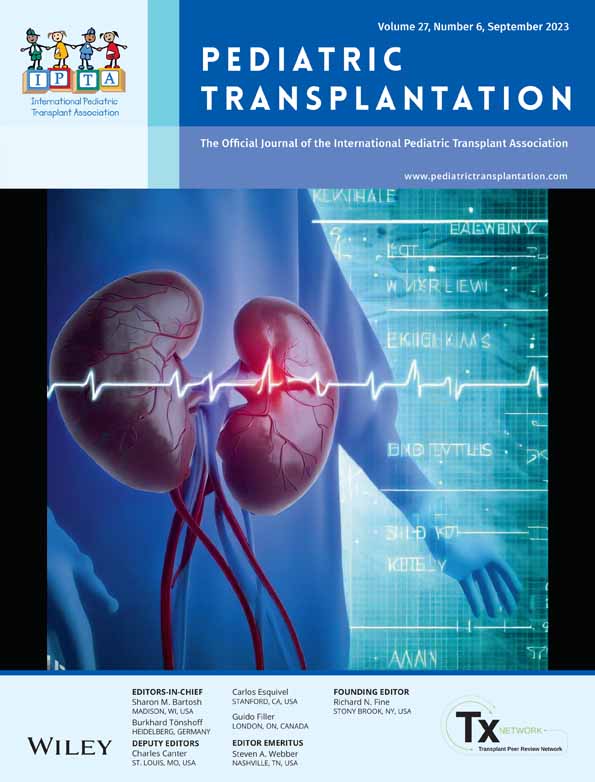Outcomes in pediatric liver transplant recipients receiving bilateral continuous erector spinae plane blocks
Abstract
Background
Regional anesthesia allows for opioid-sparing and enhanced recovery after many major surgeries. Erector spinae blockade, with reduced bleeding risk and the option for continuous infusion, offers an opportunity to promote this principle in pediatric liver transplant patients. Our goal was to evaluate pain scores, opioid use, and return of bowel function following continuous ESP blockade in pediatric liver transplant recipients.
Methods
This retrospective cohort study included extubated patients who received a liver transplant at St. Louis Children's Hospital from July 2016 to July 2021. The control group, which did not meet the criteria for ESP blockade and received standard analgesia regimens, was compared to the group receiving continuous ESP blockade. Measured outcomes included pain scores, opioid consumption through postoperative day two, date of first bowel movement, and length of stay in the ICU and the hospital.
Results
Patient demographics between control and ESP groups showed no significant differences. Pain scores between control and ESP groups also showed no significant differences. Intraoperative and postoperative opioid requirements, studied in oral morphine equivalents per kilogram (OME/kg), were significantly lower for patients with ESP blockade. Time to first bowel movement was also significantly earlier for the ESP group. No significant differences were found in length of ICU or hospital stay. There were no safety concerns or complications related to ESP blockade.
Conclusions
Use of continuous ESP blockade resulted in reduced opioid consumption through postoperative day two and earlier return of bowel function.
CONFLICT OF INTEREST STATEMENT
The authors have no conflicts to disclose. The work was supported by institutional resources.
Open Research
DATA AVAILABILITY STATEMENT
The data that support the findings of this study are available from the corresponding author upon reasonable request.




